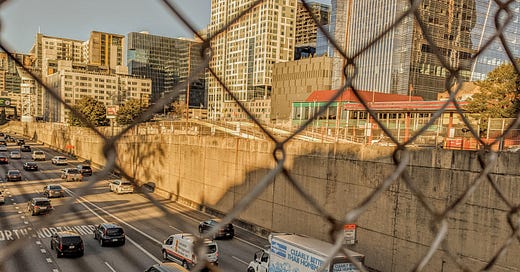We've known that car-centric urban design was a climate killer for decades. Can we finally act?
Monday was Earth’s hottest day in at least 125,000 years. Tuesday was hotter.
Many factors contributed to this, one being car-oriented sprawl. Even though this is something we’ve known for decades, we’ve largely failed to treat urban design as the climate-action tool it is.
That needs to change, and following through on that change will require acknowledging our past mistakes.
I’ve received comments over the years from people who were city leaders and planners in previous decades, arguing that the decision to treat car-centric sprawl as a fine option for our urbanism was a perfectly understandable thing at the time.
They’ve argued that car-centric placemaking, and low population densities in the city, were OK things to accept because they were a ‘preference’ & many cities did the same.
I call BS.
Rachel Carson’s Silent Spring existed. Emissions from cars were a known problem long ago.
The triggers of highway-driven sprawl were obviously racism and classism to anyone who cared to spend a sober few minutes thinking about it.
Were cities in decline? Yes. But were they fixable 50 years ago? Yes. Jane Jacobs, William H. Whyte, & more had written the solutions.
I’m not saying this just to shame the leaders of the past. This is a call to recognize how serious our mistakes were in our urbanism, how heavily those mistakes are connected to the carbon emissions that have contributed to the climate crisis, and how crucial urbanism is now.
Leaders have all the info they need to craft an urban design that addresses the climate crisis. Data on the lower carbon footprints of compact places is easily available.
Every decision that affects our built environment matters a great deal. The big ones & small ones.




